 00:04:00
00:04:00
Queueing theory
Bill introduces queueing theory and uses it to design the most efficient check out line
More details | Watch now 00:04:00
00:04:00
Photocopier
Bill uses power tools to take apart a photocopier. He shows how it works, and shares the story of its invention by Chester Carlson.
More details | Watch now 00:05:00
00:05:00
The Light Bulb
Bill reads from his book of fairy tales. He tells the story of the engineering of a light bulb, focusing on the materials breakthrough needed to make the filament.
More details | Watch now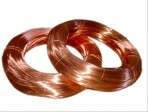 00:03:00
00:03:00
Copper – The Miracle Metal
Bill cuts a copper pipe from his ceilng to show the five properties of copper that make it the most important metal for our world: From clean water to electronics.
More details | Watch now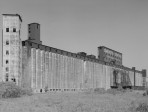 00:06:00
00:06:00
Concrete
Bill moves a piece of sewer pipe into his office to show how important the ancient material concrete is to our modern world. It, of course, wreaks havoc on his office.
More details | Watch now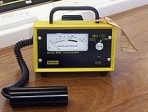 00:03:00
00:03:00
The Geiger Counter
Bill sings a song - with help from Doris Day - about the geiger counter. He shows that scientist Hans Geiger became an engineer when he designed the counter as a tool to make his life easier.
More details | Watch now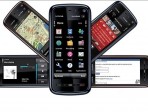 00:03:00
00:03:00
The Cell Phone
Bill invades a cell phone store to show that the design of a mobile isn't arbritary. Engineers uses seven basic principles to create a useful phone.
More details | Watch now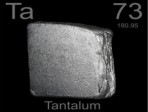 00:03:00
00:03:00
Tantalum
With his hammer Bill cracks up a cell phone to expose how our electronic gadgets rely on the mineral tantalum - mined as Coltan.
More details | Watch now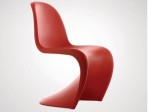 00:03:00
00:03:00
Why a Chair?
Bill asks the question 'Why a chair?' ... the answer reveals the human aspects of engineering design.
More details | Watch now 00:03:00
00:03:00
Garbage – Rubbish?
Bill covers his office floor with trash to see what takes up space in a landfill. He digs through fast food containers and diapers to learn that what we really need is green design of our manufactured objects.
More details | Watch now 00:03:00
00:03:00
Matches
Bill reveals the importance of matches in the 19th century; he shares how adding phosphorous to them revolutionized life - in both good and bad ways
More details | Watch now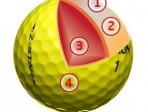 00:02:00
00:02:00
Golf Balls
To learn what's inside a golf ball - and to show how clever engineers are - Bill uses a special cutter to chop one open - well more than one.
More details | Watch now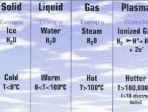 00:03:00
00:03:00
Plasma
Bill cuts a fluorescent light out of his ceiling to show that plasmas and their products are all around us - they're essential in making circuit boards, lights, and even potato chip bags.
More details | Watch now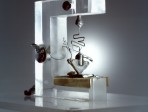 00:03:00
00:03:00
The Transistor
Bill examines the first transistor ever built. He explains how it works, and its impact on our world today. And, also, he even tests it out!
More details | Watch now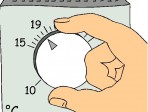 00:03:00
00:03:00
The Thermostat – Why does it look like it does?
Armed with a pair of wire cutters Bill shows how a common thermostat reveals how good industrial designers keep track of the dimensions of a human being.
More details | Watch now 00:05:00
00:05:00
The Transistor 2
Bill shows how a transistor works by examing a replica of the first one ever build: The Bardeen-Brattain point contact transistor.
More details | Watch now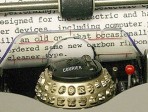 00:03:00
00:03:00
IBM Selectric Typewriter
Using slow motion video Bill Hammack shows how the mechanical digital-to-analogue converter of IBM's revolutionary 'golf ball' typewriter works.
More details | Watch now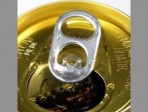 00:02:00
00:02:00
Aluminium drinks can tab
Bill uses slow motion video to show the ingenious engineering design of the apparently simple tab of a pop can.
More details | Watch now 00:02:00
00:02:00
Black Box – A flight data recorder
In designing an object an engineer must choose the proper material. Never is this more important than in the 'black box' flight data recorder.
More details | Watch now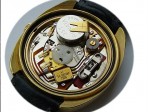 00:04:00
00:04:00
Quartz Watch
Bill takes apart a cheap watch to show how it works. He describes how a tiny quartz tuning fork keeps the time.
More details | Watch now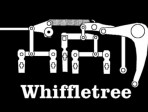 00:02:00
00:02:00
The Whiffletree
Bill describes how a whiffletree was used in early calculating devices to do mechanical digital to analog conversion. He shows briefly the device used in an IBM Selectric Typewriter.
More details | Watch now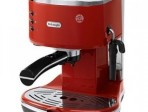 00:03:00
00:03:00
Coffee Maker: Pumping water with no moving parts
To engineer an object means to make choices. Bill illustrates how the choice of having a single heating element made an engineer find a creative way to pump water with no moving parts.
More details | Watch nowItems per page:

